May 11 to May 17
He first shouted in Hoklo (also known as Taiwanese), “You don’t need to tie my hands or cover my eyes, for I have the blood of the Japanese running through me! If you have to blame a criminal, I alone will suffice!”
He then switched to Japanese for his last words: “Long live the Taiwanese!”
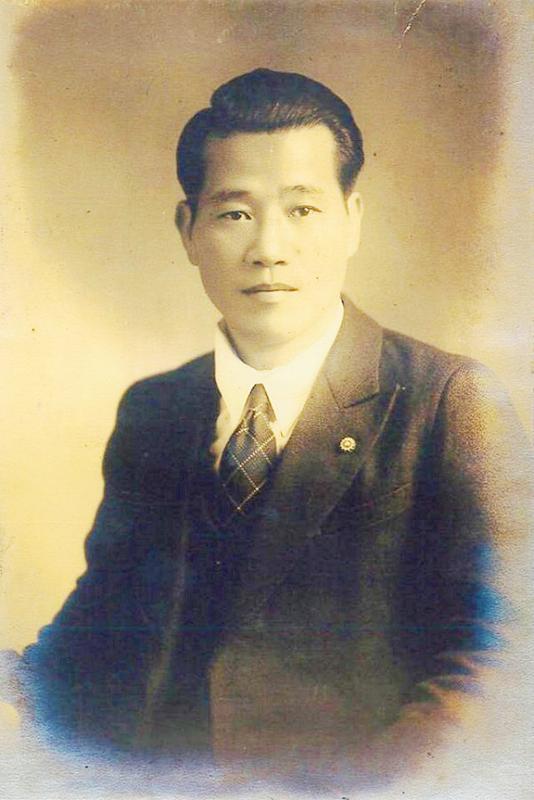
Photo courtesy of Wikimedia Commons
Tang Te-chang (湯德章) met his end at the age of 40 at the hands of Chinese Nationalist Party (KMT) troops on March 13, 1947, one of countless victims in the aftermath of the 228 Incident, an anti-government uprising that was brutally suppressed by the KMT. Born to a Japanese father and Taiwanese mother, his last words encapsulated his lifelong conflict of being descended from both the colonizers and the colonized.
In his official report, then-governor general Chen Yi (陳儀) partially blamed the uprising on Taiwanese being deeply “poisoned” by the Japanese, and that “lackeys” of the former colonial master instigated the revolt. As such, Tang became the ideal target to blame for the events that took place in Tainan.
“Aren’t you Japanese? Why don’t you go back to Japan?” a cellmate recalls the soldiers asking him at one point. “I was born in Taiwan, I was raised in Taiwan. Am I not Taiwanese?” he replied. “No, you’re Japanese,” the soldier said. “Then please interrogate me in Japanese, otherwise I won’t say a word.”
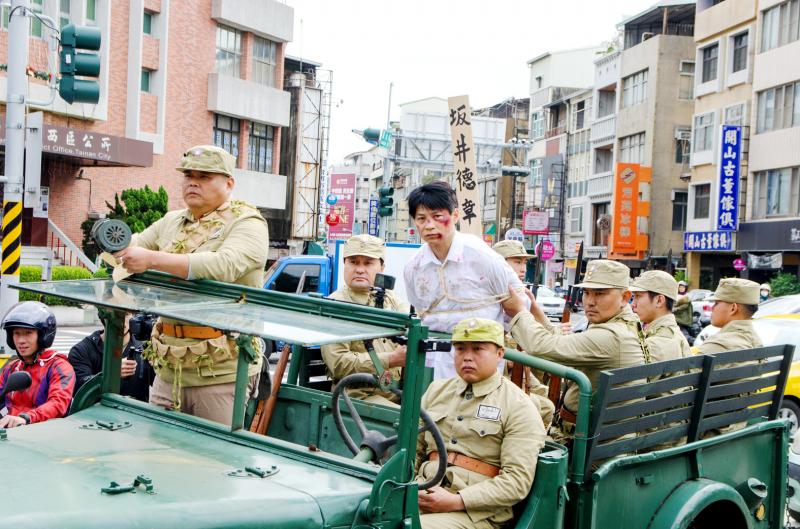
Photo courtesy of MarkTwain Production
Tang stayed true to his vow despite being tortured for days, possibly saving the lives of many Tainan citizens. For his bravery, the Tainan City Government dedicated a memorial park to him and observes the day of his death as “Justice and Courage Memorial Day.”
Tang’s name has been in the news over the past few weeks because his former residence was going to be demolished. Late last month, it was temporarily listed as a historical relic, its fate to be decided this month.
BETWEEN WORLDS
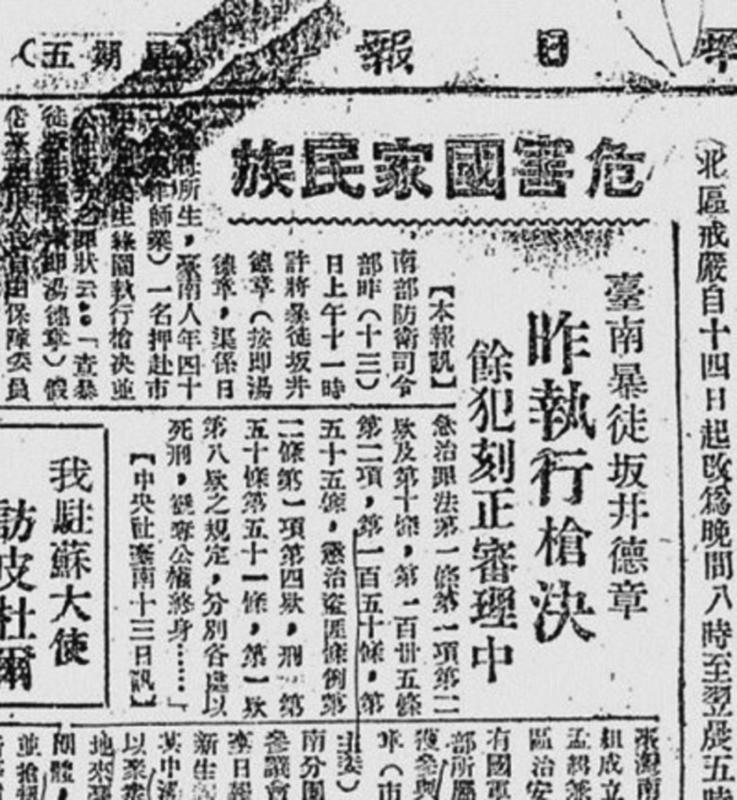
Photo courtesy of China Daily News
As a former Tainan police officer who defied the odds and passed both bar and civil servant exams in Japan, Tang had plenty of promising job offers in Tokyo. But in 1943, he made the perilous journey back home during the height of World War II.
Ryusho Kadota, who published a biography on Tang in 2017, writes that he had plenty of reasons to return home. His mother refused to move to Japan and, since his father died when he was young, he strongly identified with his Taiwanese heritage. When people asked about his decision, however, he would half-jokingly tell them that he couldn’t stay because his mother wouldn’t be able to buy her favorite betel nuts in Japan.
By returning home, Tang avoided the 1945 firebombing of Tokyo, but in those turbulent times, there wasn’t really a place that was safe.
Tang’s father, Tokuzo Sakai, came to Taiwan shortly after Japan took over Taiwan in 1895 to serve as a police officer. He met his future wife, Tang Yu (湯玉), through the job, and the two married in 1902, although Taiwanese-Japanese unions only became legal in 1933.
In 1915, the Tapani Incident broke out in southern Taiwan when Yu Ching-fang (余清芳) appointed himself Grand Marshal of the Benevolent Nation of the Great Ming (大明慈悲國) and declared war on the Japanese colonial government. The rebels attacked several police stations before they were crushed, and Sakai died in one of the attacks. Tang was eight years old.
Although the reality was that Taiwanese were treated as second-class citizens, the incident was the last of numerous Han Chinese armed revolts against Japanese rule (Aborigines would continue fighting). Tang was aware of this despite the loss of his father, Kadota writes, and often struggled with his identity.
Tang’s family fell into poverty. Since the marriage wasn’t legal, they were not compensated for Sakai’s death. Tang went by his mother’s surname, and Kadota writes, “he was still treated unfairly; his Japanese blood did not help.”
‘PRIDE OF TAINAN’
Despite dropping out of high school, Tang followed his father’s footsteps and became a policeman. He became a household name in Tainan after apprehending a wanted criminal and quickly rose through the ranks, although his reputation was tarnished by his refusal to give preferential treatment to a prominent Japanese man in a dispute with a Taiwanese.
Tang eventually decided that only by becoming a lawyer could he carry out true justice, and at the age of 32 he quit the force and headed to Tokyo. He earned his high school qualifications and passed each subsequent hurdle with flying colors. His achievements made the headlines back home — one article stated that he “made Tainan proud.”
Only two years after he achieved his dream, World War II ended and the Japanese left. Tang was serving as a Tainan city assemblyman when he heard news of the 228 Incident in Taipei. Many people in Tainan also took up arms, while the newcomers from China shuttered their shops and went into hiding. Despite suffering from malaria, Tang took part in Tainan’s temporary committee of prominent citizens to deal with the unrest.
Tang knew that if the situation in Tainan escalated, the citizens would surely be subject to violent retribution by government troops. He successfully carried out his plan to stop local unrest while promising to demand that the government rectify its misdeeds and make Taiwan a true democracy. By March 5, the situation in Tainan had largely quieted down.
However, the government’s reinforcements soon arrived from China and began killing and arresting anyone suspected of being involved with the uprising. The troops soon reached Tainan, and Tang was one of the many arrested — but not before burning the list of those involved.
The authorities knew that Tang convinced many Tainan citizens to lay down their arms, and they wanted names. He was tortured and branded the Japanese instigator of the rebellion in Tainan, which fit Chen’s narrative that the incident was mainly caused by those who were still loyal to the former colonial government.
He was paraded through town before the final bullet pierced his skull.
Taiwan in Time, a column about Taiwan’s history that is published every Sunday, spotlights important or interesting events around the nation that have anniversaries this week.
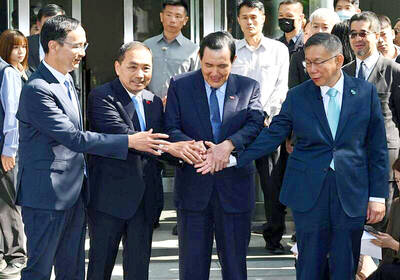
Has the Taiwan People’s Party (TPP) changed under the leadership of Huang Kuo-chang (黃國昌)? In tone and messaging, it obviously has, but this is largely driven by events over the past year. How much is surface noise, and how much is substance? How differently party founder Ko Wen-je (柯文哲) would have handled these events is impossible to determine because the biggest event was Ko’s own arrest on multiple corruption charges and being jailed incommunicado. To understand the similarities and differences that may be evolving in the Huang era, we must first understand Ko’s TPP. ELECTORAL STRATEGY The party’s strategy under Ko was

It’s Aug. 8, Father’s Day in Taiwan. I asked a Chinese chatbot a simple question: “How is Father’s Day celebrated in Taiwan and China?” The answer was as ideological as it was unexpected. The AI said Taiwan is “a region” (地區) and “a province of China” (中國的省份). It then adopted the collective pronoun “we” to praise the holiday in the voice of the “Chinese government,” saying Father’s Day aligns with “core socialist values” of the “Chinese nation.” The chatbot was DeepSeek, the fastest growing app ever to reach 100 million users (in seven days!) and one of the world’s most advanced and
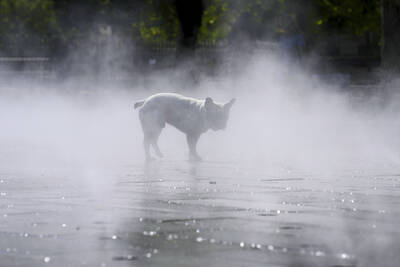
It turns out many Americans aren’t great at identifying which personal decisions contribute most to climate change. A study recently published by the National Academy of Sciences found that when asked to rank actions, such as swapping a car that uses gasoline for an electric one, carpooling or reducing food waste, participants weren’t very accurate when assessing how much those actions contributed to climate change, which is caused mostly by the release of greenhouse gases that happen when fuels like gasoline, oil and coal are burned. “People over-assign impact to actually pretty low-impact actions such as recycling, and underestimate the actual carbon

An internal Meta Platforms document detailing policies on chatbot behavior has permitted the company’s artificial intelligence creations to “engage a child in conversations that are romantic or sensual,” generate false medical information and help users argue that Black people are “dumber than white people.” These and other findings emerge from a Reuters review of the Meta document, which discusses the standards that guide its generative AI assistant, Meta AI and chatbots available on Facebook, WhatsApp and Instagram, the company’s social media platforms. Meta confirmed the document’s authenticity, but said that after receiving questions earlier this month, the company removed portions which stated